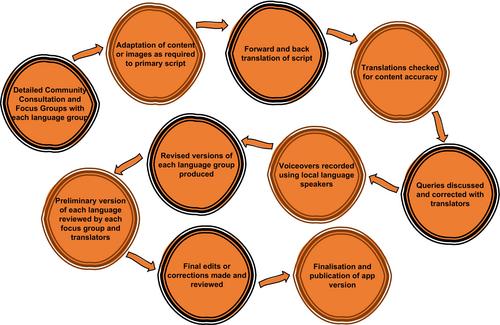Adapting and translating the ‘Hep B Story’ App the right way: A transferable toolkit to develop health resources with, and for, Aboriginal people
Abstract
Issue Addressed
In 2014 the ‘Hep B Story App’, the first hepatitis B educational app in an Aboriginal language was released. Subsequently, in 2018, it was assessed and adapted before translation into an additional 10 Aboriginal languages. The translation process developed iteratively into a model that may be applied when creating any health resource in Aboriginal languages.
Methods
The adaptation and translation of the ‘Hep B Story’ followed a tailored participatory action research (PAR) process involving crucial steps such as extensive community consultation, adaptation of the original material, forward and back translation of the script, content accuracy verification, voiceover recording, and thorough review before the publication of the new version.
Results
Iterative PAR cycles shaped the translation process, leading to a refined model applicable to creating health resources in any Aboriginal language. The community-wide consultation yielded widespread chronic hepatitis B education, prompting participants to share the story within their families, advocating for hepatitis B check-ups. The project offered numerous insights and lessons, such as the significance of allocating sufficient time and resources to undertake the process. Additionally, it highlighted the importance of implementing flexible work arrangements and eliminating barriers to work for the translators.
Conclusions
Through our extensive work across the Northern Territory, we produced an educational tool for Aboriginal people in their preferred languages and developed a translation model to create resources for different cultural and linguistic groups.
So What?
This translation model provides a rigorous, transferable method for creating accurate health resources for culturally and linguistically diverse populations.


 求助内容:
求助内容: 应助结果提醒方式:
应助结果提醒方式:


